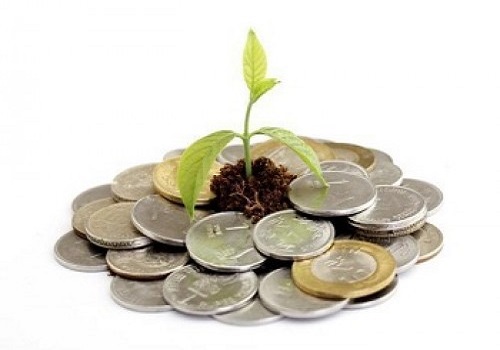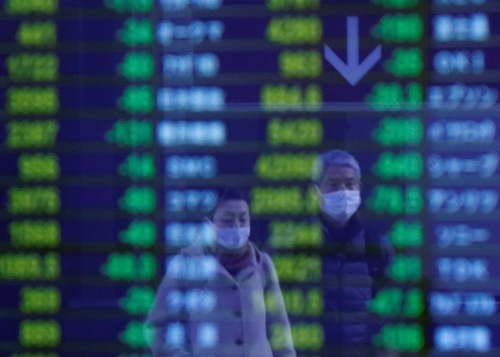Cottoncandy trading range for the day is 53630-54890 - Kedia Advisory

Follow us Now on Telegram ! Get daily 10 - 12 important updates on Business, Finance and Investment. Join our Telegram Channel
Gold
Gold prices declined by 0.37% to settle at ?76,544, weighed down by a stronger dollar as traders speculated that robust U.S. economic growth would prompt the Federal Reserve to maintain a cautious stance on rate cuts in 2025. Fed Chair Jerome Powell emphasized restraint in future rate reductions after implementing a quarter-point cut in December. Meanwhile, the anticipation of major policy shifts under Donald Trump's return to the White House in January 2025 added uncertainty to global markets. In India, gold demand waned as domestic prices surged due to a depreciating rupee, leading to discounts of up to $14 per ounce, the highest in nearly three months. Rising costs and the absence of major festivals also curbed imports, which are expected to decline sharply in December. Conversely, China experienced renewed demand as premiums of $2-$5 per ounce emerged ahead of the Lunar New Year, compared to last week's $5 discount. Central banks remained active in the gold market, with net purchases totaling 60 tons in October, the highest monthly figure in 2024. India led the buying spree, adding 27 tons, bringing its year-to-date purchases to 77 tons—a five-fold increase compared to 2023. Gold is under fresh selling pressure, with open interest rising by 1.28% to 12,779. Key support is at ?76,250, with further downside to ?75,950 if breached. Resistance stands at ?77,010, and a break above this level could lead to ?77,470.
Trading Ideas:
* Gold trading range for the day is 75950-77470.
* Gold dropped as traders anticipated robust U.S. growth would make the Fed cautious on rate-cutting well into 2025.
* Initial claims for state unemployment benefits fell to a seasonally adjusted 219,000 for the week.
* Gold discounts in India widened to a nearly three-month high as rising prices dampened demand
Silver
Silver prices declined by 0.84% to settle at ?88,887, pressured by a rise in the 10-year U.S. Treasury yield above 4.6%, its highest since early May. This reflected the Federal Reserve's outlook for limited rate cuts in 2025, citing persistent inflation risks over labor market concerns. Strong U.S. economic data, including better-than-expected initial unemployment claims and robust retail sales and services activity, reinforced the Fed’s cautious stance. Additionally, pro-inflationary policies proposed by President-elect Trump, such as tariffs and expansionary fiscal measures, heightened inflation concerns, further dampening sentiment for precious metals. On the trade front, the U.S. goods trade deficit widened to $102.86 billion in November, while wholesale inventories declined by 0.2%, reflecting mixed signals in economic activity. The global silver market remains in a structural deficit for the fourth consecutive year, with the Silver Institute projecting a shortfall of 182 million ounces in 2024. Industrial demand is expected to reach a record 1.21 billion ounces, driven by recovery in jewelry and sustained use in electronics, EVs, and solar panels. However, physical investment demand is forecasted to drop by 16%, while mine supply rises by 1%, supported by increased output in Mexico, Chile, and the U.S. Recycling is also projected to grow by 5%, led by silverware scrap from the West. Silver is under long liquidation, with a 0.65% drop in open interest to 31,931. Support lies at ?88,280, and a breach could push prices to ?87,680. Resistance is at ?89,865, with further gains possible toward ?90,850.
Trading Ideas:
* Silver trading range for the day is 87680-90850.
* Silver dropped as yield on the 10-year US Treasury note rose above the 4.6% threshold.
* The latest economic data continued to reflect a strong macroeconomic backdrop in the US
* The US trade deficit in goods widened to $102.86 billion in November 2024
Crude oil
Crude oil prices rose by 0.99% to ?6,035, driven by expectations of economic stimulus measures in China, which could revive demand. The American Petroleum Institute reported a drawdown of 3.2 million barrels in U.S. oil inventories for the week ending December 20, surpassing market expectations. Distillate inventories also fell by 2.5 million barrels, while gasoline stocks rose by 3.9 million barrels. This marked the fifth consecutive weekly drop in U.S. crude stocks, countering concerns of surplus-driven price weakness in the upcoming year. China remains a key factor, with the World Bank revising its economic growth forecasts upward for 2024 and 2025. However, concerns over weak business and household confidence, coupled with challenges in the property sector, linger. Sinopec projects that China’s crude imports could peak by 2025, with total oil consumption peaking by 2027. On the global stage, OPEC+ has cut its 2024 oil demand growth outlook for the fifth straight month. JPMorgan predicts the oil market will shift to a surplus of 1.2 million bpd in 2025, driven by a 1.8 million bpd increase in non-OPEC+ supply. Meanwhile, the EIA adjusted its demand growth forecast to 1.2 million bpd for 2024, citing weaker economic activity in China and North America. Fresh buying activity led to a 4.33% increase in open interest, settling at 9,174. Crude oil faces support at ?5,979, with a break below likely testing ?5,923. Resistance is seen at ?6,070, and a move above could drive prices to ?6,105.
Trading Ideas:
* Crudeoil trading range for the day is 5923-6105.
* Crude oil gains on expectations economic stimulus efforts will prompt a recovery in China.
* The World Bank has raised its forecast for China's economic growth in 2024 and 2025
* U.S oil inventories fell by 3.2 million barrels – API
Natural gas
Natural gas prices increased by 0.85% to ?284.3, supported by expectations of higher global LNG demand and forecasts of colder weather in the U.S. by mid-January. Industry estimates raised demand forecasts by 18 billion cubic feet over the weekend, coinciding with a second consecutive weekly storage draw exceeding 100 bcf, signaling the onset of the withdrawal season. Additionally, concerns over the reduced likelihood of Russian gas reaching Europe via Ukraine have driven demand for U.S. LNG exports, as EU nations seek alternative gas sources. U.S. gas output in the Lower 48 states averaged 103.1 bcfd in December, up from 101.5 bcfd in November, but below the record 105.3 bcfd seen in December 2023. The EIA reported that natural gas inventories in the U.S. started the winter heating season at their highest levels since 2016, ending the injection season with 3,922 bcf, 6% above the five-year average. However, utilities withdrew 93 bcf last week, reducing stockpiles to 3,529 bcf, slightly below market expectations but still 0.4% above the same period last year and 4.9% above the five-year average. The market witnessed short covering as open interest dropped by 9.65% to 11,634 contracts, while prices rose by ?2.4. Natural gas finds support at ?278.7, with a potential test of ?273.1 on further declines. Resistance is now seen at ?293.1, and a move above this level could push prices to ?301.9.
Trading Ideas:
* Naturalgas trading range for the day is 273.1-301.9.
* Natural gas prices rose amid bets of stronger global LNG demand.
* Fresh forecasts of a cold front in the US halfway through January drove the industry to raise demand forecasts by 18 billion cubic feet.
* Average gas output rose to 103.1 bcfd so far in December, up from 101.5 bcfd in November.
Copper
Copper prices slightly declined by 0.07% to ?806.45, reflecting mixed market dynamics influenced by economic support measures in China and broader global developments. Beijing has ramped up fiscal support by issuing a record-high CNY 3 trillion in special treasury bonds for 2025 to stimulate economic growth. Additionally, Chinese state media reported a positive outlook from foreign institutions for China’s capital market, signaling gradual economic stabilization. On the supply side, concerns over a surplus in the global refined copper market persist. Analysts at BNP Paribas revised their forecast for the 2025 average copper price lower by 5% to $9,020 due to a surplus of 491,000 tons projected for 2025—its largest since 2020. In contrast, China's copper imports surged to a one-year high in November, driven by restocking activities and shipments from Africa. Chile, the world’s largest copper producer, is projected to maintain stable production levels between 5.4 and 5.6 million tons in 2025, reflecting consistent output. Meanwhile, the latest data showed a deficit in the global refined copper market of 41,000 metric tons in October, compared to a 287,000 metric tons surplus during the first ten months of the year. Copper prices are under long liquidation, with a drop in open interest by 1.08% to 8,339 while prices decreased by ?0.6. Copper finds support at ?804.4, with potential testing at ?802.2 levels. Resistance is seen at ?809.4, and a break above could push prices towards ?812.2.
Trading Ideas:
* Copper trading range for the day is 802.2-812.2.
* Copper settled flat after Beijing ramped up fiscal support to revive a faltering economy.
* Chinese authorities have agreed to issue CNY 3 trillion in special treasury bonds next year, which would support economic growth.
* The global refined copper market showed a 41,000 metric tons deficit in October, compared with a 136,000 metric tons deficit in September
Zinc
Zinc prices settled slightly lower at ?282.85, down by 0.12%. Despite some gains in production, the market is under pressure due to weak demand and ongoing global surpluses. Domestic refined zinc production in December 2024 is expected to increase by over 20,000 metric tons MoM, or about 5%, although cumulative production for 2024 will see a decline of more than 6% YoY. This reflects a broader trend of limited growth in domestic zinc production. In contrast, China’s refined zinc production showed a modest increase of 1,000 metric tons in November, but still recorded a nearly 12% YoY decline. During the first 11 months of 2024, production fell by about 6%, driven by lower output in major regions like Henan, Gansu, and Sichuan. Furthermore, global zinc mine production witnessed a 3.8% decline in January-October, with reductions from Canada, China, South Africa, and Peru. On the demand side, China remains a key factor. Although retail sales growth slowed more than expected in November and new home prices continued to decline, revived hopes of additional fiscal stimulus from Beijing have offered some support. Additionally, zinc inventories in warehouses monitored by the Shanghai Futures Exchange fell by 24.67% from the previous week, indicating tightening supply conditions. Zinc is under fresh selling pressure, with a rise in open interest by 0.64% to settle at 2999, while prices declined by ?0.35. Support levels are at ?281.4, with potential testing at ?279.8. Resistance is seen at ?284.4, and a move above could push prices towards ?285.8.
Trading Ideas:
* Zinc trading range for the day is 279.8-285.8.
* Zinc dropped as domestic refined zinc production in December will increase by over 5% MoM.
* The global zinc market deficit edged up to 69,100 metric tons in October from 47,000 tons in September
* Zinc inventories in warehouses monitored by the SHFE fell 24.67% from last Friday
Aluminium
Aluminium prices remained unchanged at ?241.4. Despite a stable price movement, key data suggests an underlying tension in the market, influenced by supply-demand dynamics. Global primary aluminium output rose by 3% year-on-year to 6.04 million tonnes in November, according to the International Aluminium Institute (IAI). However, downside pressure was limited as traders withdrew more than 82,000 tonnes from London Metal Exchange (LME) warehouses, marking the highest withdrawal since mid-October, primarily from South Korea’s stockpiles. The global refined aluminium market remained in a short supply of 40,300 tonnes in October, highlighting a persistent imbalance between production and consumption. The cumulative global refined aluminium production stood at 59.6524 million tonnes for the first ten months of the year, against a consumption of 59.985 million tonnes, resulting in a deficit of 332,600 tonnes. In China, the world’s largest aluminium producer, output rose by 3.6% in November to 3.71 million tonnes. Cumulatively, China produced 40.22 million metric tonnes of aluminium during the first eleven months of 2024, reflecting a 4.6% increase from the same period in the previous year. Aluminium is experiencing fresh selling pressure, with open interest rising by 3.22% to settle at 3265, while prices remain unchanged at ?241.4. Support is seen at ?240.4, and below this, a test of ?239.2 is expected. Resistance is likely around ?242.7, and a move above could push prices towards ?243.8.
Trading Ideas:
# Aluminium trading range for the day is 239.2-243.8.
# Aluminum settled flat as global aluminium output in November rose 3% year on year
# China’s policymakers are planning to boost bond sales.
# Global refined aluminum market in short supply of 40,300 tons in October.
Cotton
Cotton futures settled down by -0.53% at ?54,140, driven by rising global production estimates and tight domestic supplies. Global cotton production for the 2024-25 cotton year is projected to increase by over 1.2 million bales to reach 117.4 million bales, primarily due to higher production in India and Argentina. In India, key northern states—Punjab, Haryana, and Rajasthan—have witnessed a sharp 43% decline in the arrival of kapas (unginned cotton) until November 30 compared to the previous year. This decline has caused supply chain disruptions, with farmers holding back produce in anticipation of better prices, while ginners and spinners face raw material shortages, especially in Punjab. The Cotton Association of India (CAI) has maintained its cotton consumption estimate for the 2024-25 season at 313 lakh bales of 170 kgs each, while the cotton pressing estimate stands at 302.25 lakh bales. Cotton imports are also expected to rise significantly to 25 lakh bales in the ongoing crop year, up from 15.20 lakh bales in the previous year. Furthermore, U.S. cotton production has been revised higher to nearly 14.3 million bales, with global production increasing by 1.2 million bales to 117.4 million, largely due to a 1-million-bale increase in India’s crop. Technically, the market is under fresh selling, with open interest rising 0.27% to settle at 368. Prices have declined by ?290, with support levels at ?53,890 and a potential test of ?53,630 if broken. Resistance is seen at ?54,520, with potential upside targets of ?54,890 in case of bullish momentum.
Trading Ideas:
* Cottoncandy trading range for the day is 53630-54890.
* Cotton dropped as global cotton production is projected to rise by more than 1.2 million bales
* India's cotton production in 2024/25 is likely to fall by 7.4% from a year ago
* Cotton production is projected to increase in China, Brazil, and Argentina, more than offsetting reductions in the US and Spain – USDA
* In Rajkot, a major spot market, the price ended at 25601.4 Rupees dropped by -0.14 percent.
Turmeric
Turmeric futures settled up by 2.07% at ?14,170, driven by strong buying activity amid low stock levels and anticipated delays in the arrival of the new crop. Despite the increase in arrivals to 9,030 bags from the previous session's 7,965 bags, prices are expected to remain firm until fresh supplies become available. Reports suggest that the turmeric crop is in good to excellent condition with minimal weather disruptions, though delays in harvesting due to prolonged vegetation growth caused by heavy rains may impact supply timelines. Increased acreage has been noted in key regions like Maharashtra, Telangana, and Andhra Pradesh, with an estimated 30-35% higher sowing compared to the previous year. However, low export demand combined with rising acreage could exert downward pressure on prices in the near term. Indonesia has also seen peak harvesting during dry weather, further influencing global turmeric supplies. Turmeric exports have shown a robust increase, with 6.57% growth during Apr - Oct 2024 at 108,879.96 tonnes compared to 102,162.90 tonnes in the same period last year. In October 2024, exports rose by 57.22% compared to October 2023, reaching 15,938.21 tonnes. Similarly, imports have surged by 118.99%, reaching 17,692.28 tonnes during Apr-Oct 2024 compared to 8,079.18 tonnes during the same period last year. Technically, the market is witnessing fresh buying, with open interest rising 2.16% to settle at 11,590. Prices have gained ?288, and support is seen at ?13,880 with a potential test of ?13,592 if broken. Resistance is now likely at ?14,438, with the potential for prices to test ?14,708 in bullish conditions.
Trading Ideas:
* Turmeric trading range for the day is 13592-14708.
* Turmeric gains on strong buying activity amid reports of low supplies till the arrival of new crop.
* However upside seen limited as turmeric crop is reported to be in good to excellent condition.
* In Indonesia, dry weather has accelerated harvesting, which is currently at peak levels.
* In Nizamabad, a major spot market, the price ended at 13655.7 Rupees dropped by -0.31 percent.
Jeera
Jeera prices settled up by 0.94% at ?24,045, supported by delayed sowing in key producing states like Gujarat and Rajasthan, along with robust export demand. Sowing has been significantly impacted in Gujarat, the largest producing state, with only 57,915 hectares covered out of the normal 3.81 lakh hectares. This is compared to 2.44 lakh hectares covered during the same period last year, leading to a delayed seeding by 20-25 days due to higher temperatures. Rajasthan also witnessed a decrease in cumin cultivation, estimated to decline by 10-15%.India’s cumin seed production increased to 8.6 lakh tonnes from an area of 11.87 lakh hectares in the 2023-24 season, a notable rise from the previous year’s production of 5.77 lakh tonnes from 9.37 lakh hectares. The decrease in production combined with India’s competitive pricing at $3,050 per tonne, significantly lower than Chinese cumin at $3,250-$3,300, is attracting international buyers, particularly from China, Europe, and other regions. Exports of jeera during Apr-Oct 2024 surged by 77.37% to 135,450.64 tonnes compared to 76,367.90 tonnes during the same period last year. October 2024 exports saw a rise of 161.04% to 16,257.44 tonnes compared to 6,228.01 tonnes in October 2023. Technically, the market is under short covering with a decrease in open interest by 9.92% to settle at 2,316. Prices are up ?225, and support is seen at ?23,840, with a potential test of ?23,640 if broken. Resistance is now likely at ?24,170, with prices potentially testing ?24,300 in bullish conditions.
Trading Ideas:
* Jeera trading range for the day is 23640-24300.
* Jeera prices gained as sowing has been delayed
* Higher day temperatures in the past few weeks has impacted the seeding of jeera and has also led to poor germination in various places.
* In Gujarat, jeera sowing has taken place in only 57,915 hectares till November 25 during the rabi 2024-25 cropping season.
* In Unjha, a major spot market, the price ended at 24200.1 Rupees dropped by -0.06 percent.
Views express by all participants are for information & academic purpose only. Kindly read disclaimer before referring below views























